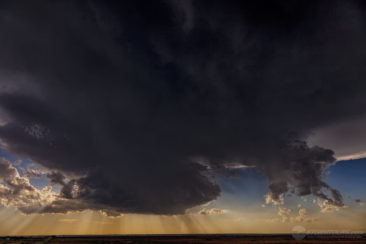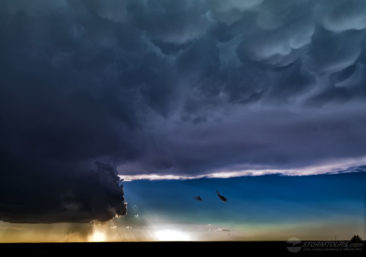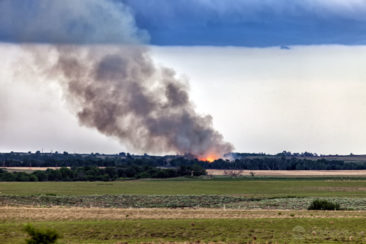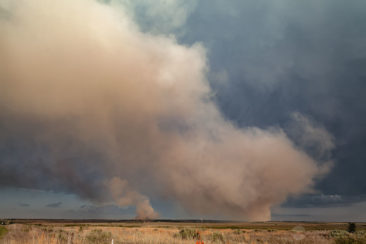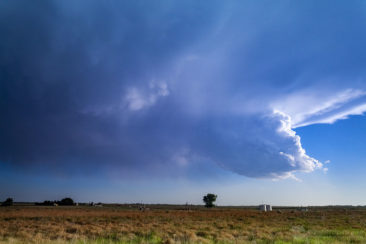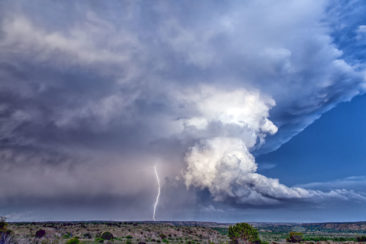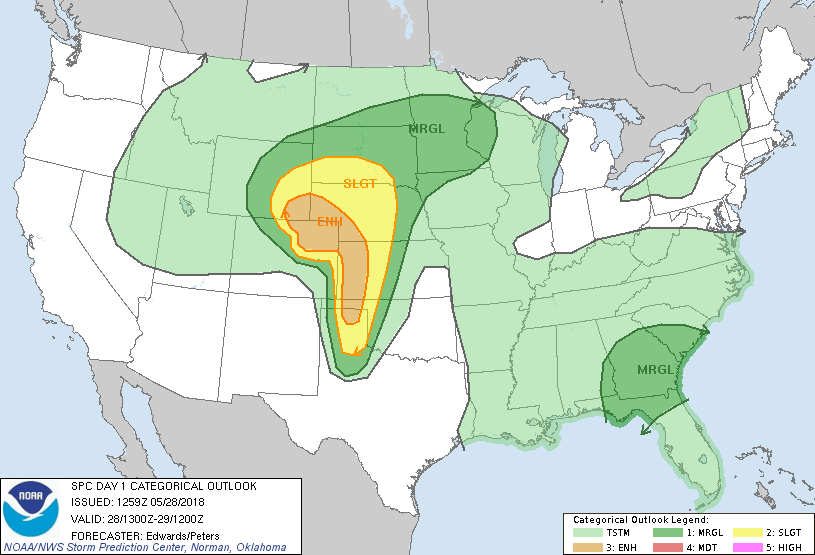 While not the type of supercells that we expect to see, Tour 2 witnessed a common and extremely dangerous result of lightning after a low-precipitation supercell started several wildland fires north of Allison, Texas.
While not the type of supercells that we expect to see, Tour 2 witnessed a common and extremely dangerous result of lightning after a low-precipitation supercell started several wildland fires north of Allison, Texas.
Lightning is a major factor in wildland fires. On average, the number of acres burned per fire is higher with lightning fires than from fires caused by humans, according to statistics from the National Fire Protection Association.
In addition to causing fires, lightning strikes are one of the biggest risks associated with thunderstorms, and this would also include storm chasing since we’re often with the range of a lightning strike. The general rule-of-thumb is: if you can hear thunder, you’re close enough to be struck by lightning.
Much of the Texas Panhandle has been rain deficient for several years now, so it doesn’t take much for a wildland fire to get started.
We stood in awe as lightning was hitting the ground around us and nearly every lightning strike was setting off a new fire to the point that local firefighting crews were getting overwhelmed while some fires flared up from a spark to engulfing small forested areas within mere seconds.

